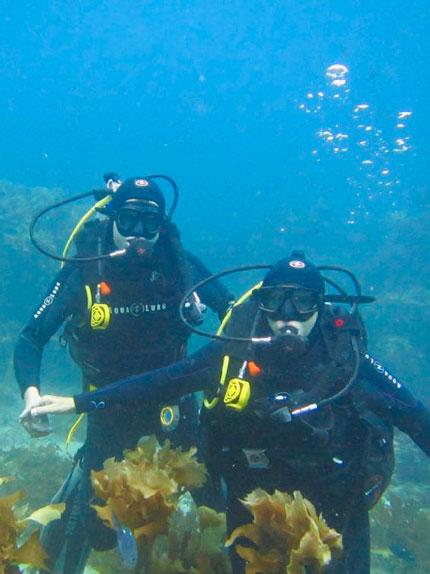Diving at the Poor Knights
Leaving Auckland on a late summer’s evening my dive buddy son James and I drove north to Tutukākā, the gateway to the Poor Knight Islands. Our love of anything fishy has bought us together over two decades, diving and fly fishing.
Many years ago, I learnt to dive on the South coast of Wellington. The Cook Strait currents would throw me onto the massive kelp beds like a rag doll as I hunted for crayfish, so the thought of a dive at the Poor Knights didn’t daunt me at all.
I was looking forward to experiencing a site Jacques Cousteau rated one of the 10 best to dive in the world.
Having signed up with Dive Tutukākā, we were up early to get kitted out with our gear and a packed lunch. I imagined the 23-kilometre trip to the islands would be calm, however it was anything but.
We lurched from side to side as the swell increased and I began to second-guess what the dive would be like. Yet there was no going back. I’d heard too much about the drop offs, walls, arches and tunnels, not to mention the sea life, to consider changing my mind.
We tied up to a buoy in a sheltered inlet and, as our skipper had reassured us, we’d left the swell behind.
All geared up and ready to get beneath the glassy surface, I checked James’ gear one last time and we both rolled off the back of the boat.
The water infiltrated my wetsuit but there was no jarring pain; it was tepid from the converging warm currents, unique to this microclimate.
As we began our descent we found the visibility was good and the marine life plentiful. Many of our local fish shop species were evident, including trevally, kingfish, john dory and snapper. There was also a delightful mix of tropical fish as the sub-tropical current carries them to the Poor Knights.
The mosaic eel added great colour to the under-world, as did the sponges, clown nudibranch sea slugs and vibrant anemones. Larger species, including sting rays and visiting manta rays intensified our experience.
In 1981 the Poor Knight Islands were made a marine and nature reserve to preserve the uniqueness of the sea life and fauna. The legislation prevents anyone from landing on the islands or disturbing the marine life. A no-fishing zone from within 800 metres of the islands was also created. The success of this law was evident when we spotted a metre-long snapper left to breed and grow old in peace. It was probably 60-70 years old.
While the Poor Knights is a popular diving spot, it is possible to feel you have the place to yourselves. There are over 60 dive sites creating more than enough room for everyone to enjoy the solitude of a quiet dive and a brush with nature.
Reported by Jane Jeffries for our AA Directions Summer 2018 issue




